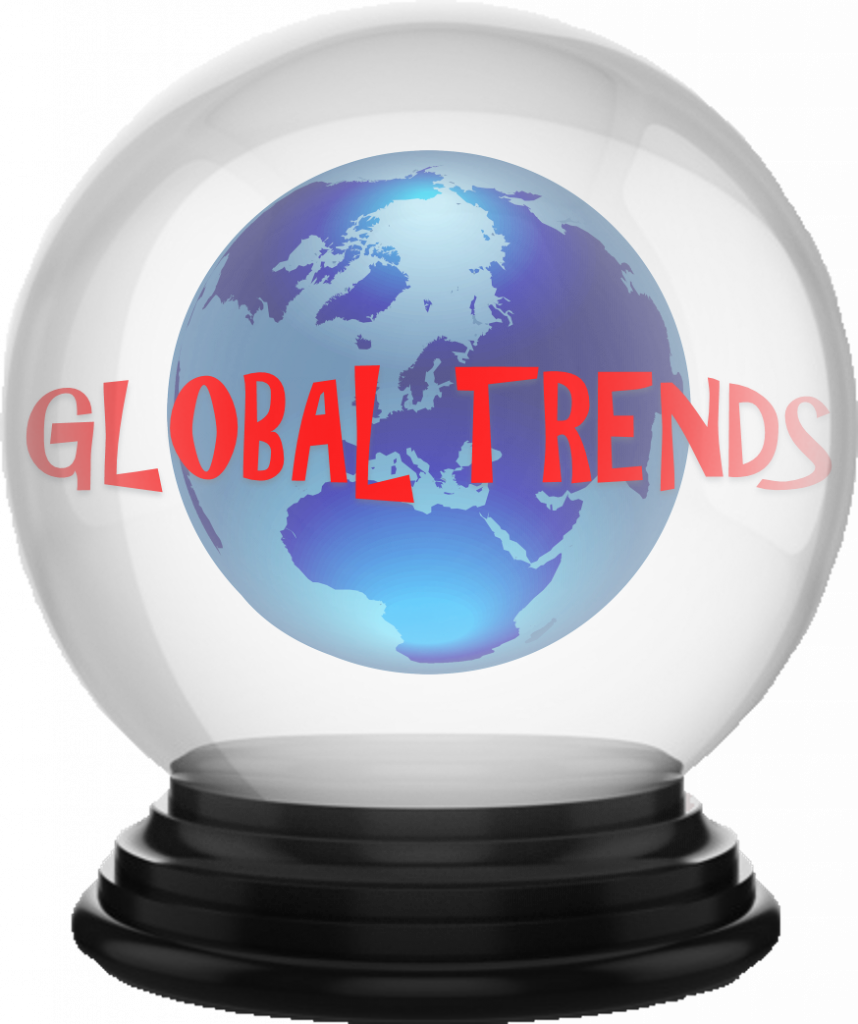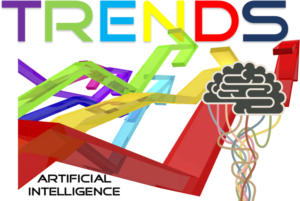To really know what’s happening in a given arena of human or economic activity, you must take a deep dive. The platform off of which you dive, however, is the broader world stage. An understanding of larger global trends (i.e., trends driving the world into the future) is essential to making informed decisions. Former U.S. President Bill Clinton once stated, “Follow the trend lines, not the headlines.” For business leaders, following trend lines rather than headlines is good advice. There are several challenges associated with following trend lines. One challenge is knowing which trends are going to impact your business. A second challenge is being able to determine which trends have legs and which trends will fade or be replaced by other trends. Twenty-five hundred years ago the philosopher Heraclitus, wrote, “The only thing that is constant is change.” He was correct. However, business leaders need to understand how things are changing if they are to successfully adapt their businesses to meet changing conditions. Jason Mander (@thejasonmander), Chief Research Officer at GlobalWebIndex, observes, “Like the world at large, data can seem intimidating and indecipherable. But it can be made easier to understand when you spot the connections.”[1] Starting with some understanding of global trends can help decision makers connect the dots as they make decisions about the year ahead.
Five 2020 Mega Trends
The struggle between optimism and pessimism. The first trend discussed by Mander is the struggle between optimism and pessimism. He writes, “We believe it’s the consumer’s struggle between optimism and pessimism that will take center stage in 2020.” With signs of global recession on the horizon, ongoing trade wars, entrenched political divisiveness, and lack of action on climate change, the pessimistic view of the world is easier to spot than the optimistic view. Nevertheless, some good things are happening. For example, Gartner analysts predict, “By 2023, the number of people with disabilities employed will triple due to AI and emerging technologies, reducing barriers to access.”[2] At the same time, people are worried artificial intelligence and other emerging technologies are coming for their jobs. Mander and his GlobalWebIndex colleagues are wise to highlight the tension between optimism and pessimism as one of the most significant trends affecting the globe.
The growing importance of the digital path to purchase. Black Friday 2019 results continue to highlight the increasing importance of the digital path to purchase and omnichannel sales. Ingrid Lunden (@ingridlunden) reports, “Smartphone sales were up 21% over [2018] and those who were not buying were, as a start, browsing, with whopping 61% of all online traffic to retailers coming from smartphones, up 15.8% since [2018].”[3] Sarwant Singh, a Senior Partner at Frost & Sullivan, predicts, “The future will be that of everything, everywhere marketplaces.”[4] Analysts, including Singh, aren’t writing a eulogy for brick-and-mortar retailers, but they do stress the importance of having a strong omnichannel strategy. Singh explains, “[The everything, everywhere marketplaces] concept will not mean the end of the physical store but instead the emergence of a ‘bricks-and-clicks’ model where online vehicle retail and the traditional physical store will reinforce each other, adding mutual value to the consumer experience.” On the down side, Gartner analysts predict, “By 2024, the World Health Organization will identify online shopping as an addictive disorder, as millions abuse digital commerce and encounter financial stress.”
Continuous disruption. Jacques Bughin and Jonathan Woetzel (@JonathanWoetzel), directors of the McKinsey Global Institute, write, “We live in an era of disruption in which powerful global forces are changing how we live and work. The rise of China, India, and other emerging economies; the rapid spread of digital technologies; the growing challenges to globalization; and, in some countries, the splintering of long-held social contracts are all roiling business, the economy, and society. These and other global trends offer considerable new opportunities to companies, sectors, countries, and individuals that embrace them successfully — but the downside for those who cannot keep up has also grown disproportionately. For business leaders, policy makers, and individuals, figuring out how to navigate these skewed times may require some radical rethinking.”[5]
The value of data is growing. According to The Economist, “The world’s most valuable resource is no longer oil, but data. … Smartphones and the internet have made data abundant, ubiquitous and far more valuable. Whether you are going for a run, watching TV or even just sitting in traffic, virtually every activity creates a digital trace — more raw material for the data distilleries.”[6] Yossi Sheffi (@YossiSheffi), the Elisha Gray II Professor of Engineering Systems at MIT, agrees with that assessment. He explains, “The well-worn adage that a company’s most valuable asset is its people needs an update. Today, it’s not people but data that tops the asset value list for companies. And it will become increasingly difficult to compete with large enterprises that are amassing huge volumes of this asset.”[7] Singh predicts, “Data monetization, gathered from online and offline revenue streams, will be the fulcrum of many new business models. Data monetization strategies will seek to optimize the value of data to reach untapped customer segments, create new markets, and open up unexplored revenue streams. The future will be shaped by (the alliteratively pleasing) 4 ‘Bs’: Bartering, Brokering and Building Services, which will emerge as the three main business models of data monetization, together with Business Intelligence.”
The rise of the global nervous system. Analysts at Kjaer Global write, “The Internet of Things is already here and, by 2020, over 30 billion devices will be connected. We see ‘deep learning’ inspired by artificial ‘neural networks’ and evolved ‘augmented reality’. This enables huge opportunities in all areas of life: politics, education, media, health, commerce and leisure. The Internet will soon be connected to everything including our brains — enabling fast and accurate decoding of multi-layered information.”[8] Singh predicts, “Within the next five years, an impressive range of customized solutions will connect the three silos — home, workplace and the city — in our daily lives. In the next 10 years, anytime-anywhere connectivity based on the seamless integration of video, voice, and data services will become standard.”
Concluding thoughts
Zeev Efrat, Frost & Sullivan director in Israel, notes, “Mega trends are global, sustained and macro economic forces of development that impact business, economy, society, cultures and personal lives thereby defining our future world and its increasing pace of change.”[9] Obviously there are more than five important trends driving the world into the future. Singh believes the rise platform-based companies, like Apple, Google, Amazon, Microsoft, and Facebook, will continue to be as important as traditional product-based companies. Gartner analysts believe cryptocurrencies will become more mainstream. And continuing trends, like urbanization and climate change, will have an impact on the decisions business and political leaders make. Efrat concludes, “Mega trends have different meanings and impacts for different industries, companies and individuals. Analysis of these mega trends and their implications forms an important component of a company’s future strategy, development and innovation process, and design and technology planning.”
Footnotes
[1] Jason Mander, “Know What’s Ahead: The Trends Shaping 2020,” GlobalWebIndex, 12 November 2019.
[2] Michael J. Miller, “Gartner: Top 10 Strategic Predictions for 2020 and Beyond,” PC Magazine, 25 October 2019.
[3] Ingrid Lunden, “Black Friday sees record $7.4B in online sales, $2.9B spent using smartphones,” TechCrunch, 30 November 2019.
[4] Sarwant Singh, “The Twelve Mega Themes That Will Drive Our Future World,” Forbes, 28 August 2019.
[5] Jacques Bughin and Jonathan Woetzel, “Navigating a world of disruption,” McKinsey Global Institute, January 2019.
[6] Staff, “The world’s most valuable resource is no longer oil, but data,” The Economist, 6 May 2017.
[7] Yossi Sheffi, “What is a Company’s Most Valuable Asset? Not People,” Supply Chain @ MIT, 20 December 2018.
[8] Kjaer Global, “Global Key Trends 2020,”Global Influences, 2019.
[9] Zeev Efrat, “World’s Top Global Mega Trends To 2020 and Implications to Business, Society and Cultures,” Frost & Sullivan, 2019.





